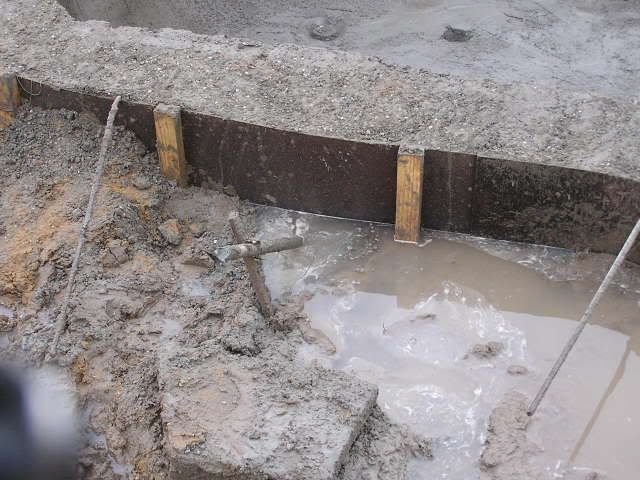Hi folks,
A quick question here...I just had the shell of my pool shot today. Everything went great and the shell looks great. The only small hitch that happened is the light niche for the deep end of the pool ended up a little crooked and by the time we noticed, the gunite was just starting to setup. They dug a little out around the niche and straightened it out then powdered the area around the niche with some dry Portland cement and then packed fresh gunite around that. Everything looks normal and the niche is now straight and correct.
My question is...would it be normal for water from the OUTside of the pool to leak past the niche and seep into the pool? Due to the rain today we had some water on the outside of the forms and I can see water slowly seeping past the niche from the outside down to the bottom of the pool. The gunite guys didn't seem concerned at all and said it happens sometimes around penetrators (PVC and/or light niches) and the plaster is what actually seals all these small leaks. I do trust them, they've been very upfront about everything and helped me out alot since they know I'm learning a little as a I go. I'd like to hear it from another source though. (that's y'all)
This is a pic of the water on the backside of the forms. I'll bunker it up tomorrow so water can't sit there, but it doesn't change the situation. Would I need to pack some other sealer around the niche? Or will the plaster do the trick? By the time we plaster and fill, it's too late to do anything else if there's a problem...

Thank for any input on this...
Jim
A quick question here...I just had the shell of my pool shot today. Everything went great and the shell looks great. The only small hitch that happened is the light niche for the deep end of the pool ended up a little crooked and by the time we noticed, the gunite was just starting to setup. They dug a little out around the niche and straightened it out then powdered the area around the niche with some dry Portland cement and then packed fresh gunite around that. Everything looks normal and the niche is now straight and correct.
My question is...would it be normal for water from the OUTside of the pool to leak past the niche and seep into the pool? Due to the rain today we had some water on the outside of the forms and I can see water slowly seeping past the niche from the outside down to the bottom of the pool. The gunite guys didn't seem concerned at all and said it happens sometimes around penetrators (PVC and/or light niches) and the plaster is what actually seals all these small leaks. I do trust them, they've been very upfront about everything and helped me out alot since they know I'm learning a little as a I go. I'd like to hear it from another source though. (that's y'all)
This is a pic of the water on the backside of the forms. I'll bunker it up tomorrow so water can't sit there, but it doesn't change the situation. Would I need to pack some other sealer around the niche? Or will the plaster do the trick? By the time we plaster and fill, it's too late to do anything else if there's a problem...

Thank for any input on this...
Jim

